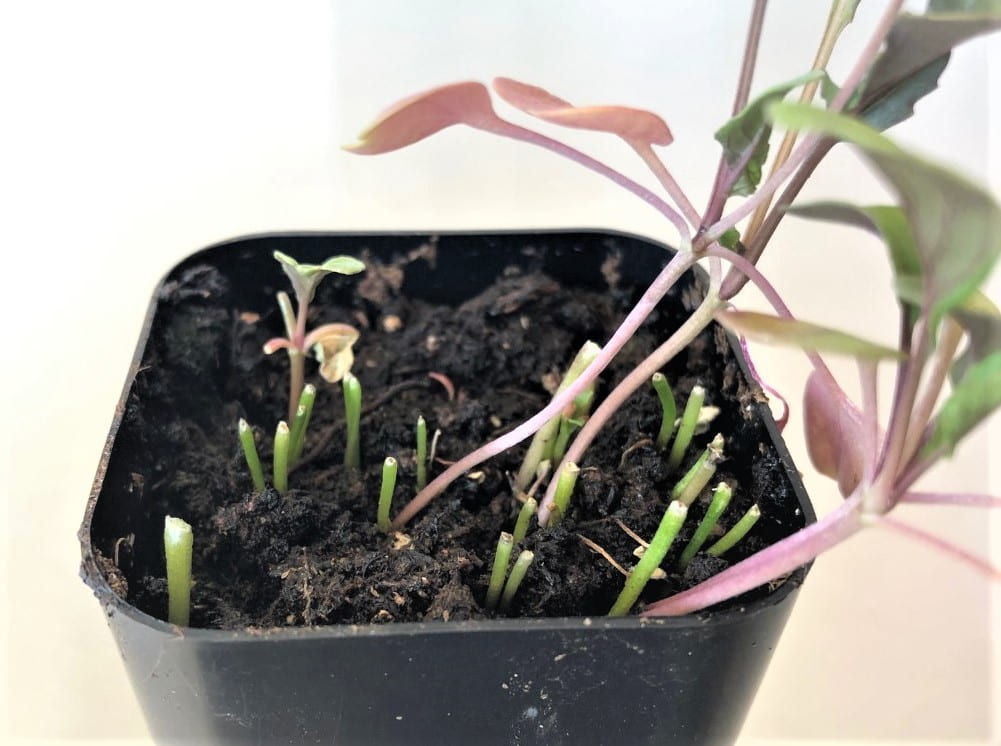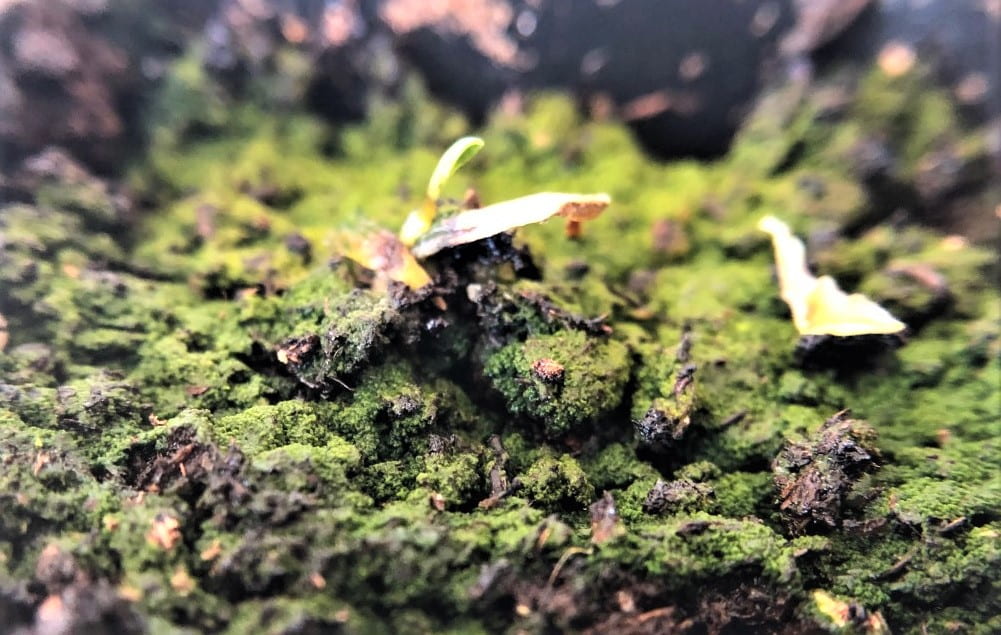This is a follow up to the Seed Starting post that is used to provide educational support to Columbus City Schools teachers growing projects. Other educators may find this useful as well as anyone who likes to start their own seeds.
We at Extension like to develop content based on feedback to address client concerns. Two colleagues who had not seed started in the past used the CCS materials kit and the video to start some seeds and then come to ask questions. Some good learning experiences below.

The LED light panel is going to provide more light to plants in the middle of the flat. That is because light will reach them from all sides. Plants at the edges get less light as they may only get light from one direction. It is wise to move the plants around the flat periodically so that they get equal amounts of light. That keeps the seedlings from getting “leggy.”

This pot was planted too thickly with too many seeds. These plants will not turn out well as they will all compete with each other.

This pot was planted too thickly and then thinned with scissors. You can see that some stem growth occurred after thinning. If you want a sturdy transplant, it is best to plant 2-3 seeds maximum and then thin to one single plant.

This plant grew from a seed planted too close to the side of the pot. It is best to put the seeds closer to the middle when you plant so that you get a root ball that grows in all directions as opposed to a seed with a limited root ball.

Be careful when handling your plants. A plant can handle a damaged leaf or small part of root as it will grow new ones, but if the stem is damaged then the plant will die. This pot needs replanted.

This seedling is showing evidence of nitrogen deficiency. When there is not enough nitrogen, the plants lower leaves will turn yellow as the seedling matures. The correction for this is to fertilize according to the directions on the bottle.

This kale is also showing signs of nitrogen deficiency. If multiple plants are growing in a pot, they will use up the fertility faster. Correct this problem by increasing fertilization.

This pot shows evidence of fungal growth. This commonly happens when you have light and fertilizer on organic matter.
If you have problems in a pot or with a plant in many cases it is best to start a new transplant. That way you will have a strong, sturdy transplant that has a better chance of growing into a productive vegetable.
Feel free to contact me if you have questions at mcdermott.15@osu.edu